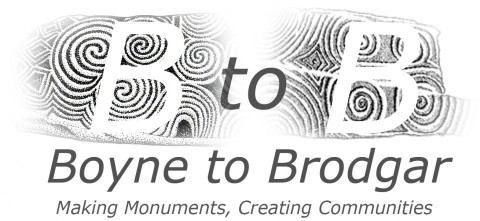The development of the major passage tombs in the Boyne Valley, and the subsequent emergence of the Heart of Neolithic Orkney as a major monumental centre, involved ‘cosmological acquisition’ – i.e. the undertaking of long-distance journeys to acquire exotica and arcane knowledge – by elites. Examples of this include the adoption of Morbihannais elements within passage tomb ‘art’ in the Boyne Valley; the presence of objects with Iberian affinities at Knowth and Newgrange (summarised by Stout and Stout 2008); and the adoption of Scottish (and more specifically, Orcadian) symbols of power in developed Irish passage tombs (e.g. miniatures of carved stone balls in Knowth 1 east: Sheridan 2014c). The nature and chronology of these developments is becoming better understood, not least through a major programme of radiocarbon-dating of Orcadian Grooved Ware – a type of pottery adopted in Ireland from Orkney – as part of Professor Alasdair Whittle’s The Times of their Lives project (e.g. MacSween et al. 2015). The most pressing outstanding questions are:
- Were the large Irish passage tombs found outside of the Boyne Valley (e.g. Queen Maeve’s Tomb on Knocknarea, or Heapstown cairn: Hensey 2015) built around the same time as the principal tombs in the Boyne valley cemeteries? When, where and why did the process of passage tomb aggrandisement begin? And what happened after these major passage tombs had been built?
- When did henges/embanked enclosures become part of the Neolithic monumental repertoire and what lay behind this switch to using open-air monuments instead of (or more probably, as well as) passage tombs? How were they used? Where and how did the concept of this kind of monument emerge?
- What is the relationship (in terms of chronology, use and meaning) between ‘rock art’ and ‘passage tomb art’ in our area of interest?
- What is the precise sequence (and range) of monument building between c. 3300 BC and c. 2900 BC in Ireland, Man and Scotland; and to what extent are the changes after c. 3100 BC synchronous (and associated) with the emergence and southwards spread of Grooved Ware use? (Within Orkney, an additional question relates to the degree of overlap in the construction and use of Maes Howe-type passage tombs and other megalithic monuments.)

